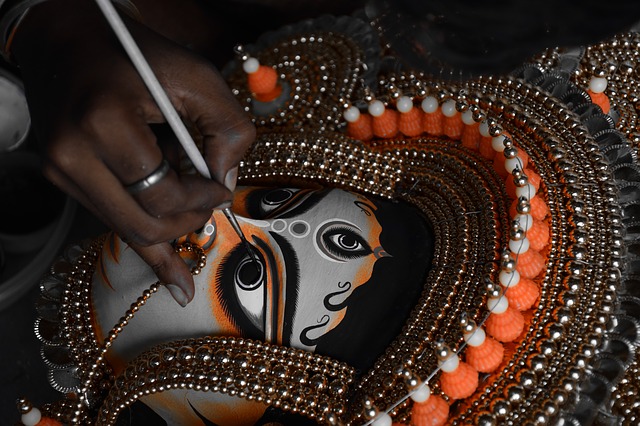India’s art scene has been picking up momentum over the past few years, which isn’t surprising considering the country’s cultural riches. The fusion of modern and traditional ideals has paved the way for an artistic renaissance, with artists taking the vibrant new generation of Indian culture as their muse.
But artistic styles are being taken in a whole new direction. Indian art has historically been reserved for the wealthy members of society and art dealers from overseas. Discontent with this elitism, a new wave of creatives are democratising art by taking to the streets, ensuring their work is available for everyone to see.
Mumbai’s public spaces are being given new life
One of the most populous and fast-paced cities in the world, Mumbai has little tradition with the public art scene. As city-based architect Kaiwan Mehta explained: “The city’s pace is too fast to allow people a moment’s respite to stand and observe art.” However, the city is now enjoying its own renaissance with a number of public installations designed to spark interest in its residents.
Since 2010, a Mumbai-based initiative known as Art Oxygen (ArtO2) has been working on bringing more art to the city. Last year, the contemporary art initiative organised the seventh art festival called Encounters: Bori Bunder @ Platform 8, which saw a range of artists come together to create installations for the public. Artists such as Andrea Caretto, Teja Gavankar and Owais Husain each created pieces for the exhibition, which emerged as “a point of reflection and understanding of the connection between the railway, its people, and the city”.
Contemporary installation artist Owais Husain created You Are Forever, a work that featured steel trunks stacked on top of each other at the city’s bustling Chhatrapati Shivaji Terminus. The trunks formed an L shape, and were used as the surface to screen a video about three rivers incarnated as sisters. The installation inspired memories of travel and portrayed cultural shifts from one place to another.
Delhi’s underground graffiti culture has proliferated
Delhi is also enjoying a period of artistic reinvention. It’s underground graffiti culture proliferated and has since evolved into a boundary-pushing street art movement. Much like New York City, Delhi now boasts a number of street art hotspots and has seen its walls, marketplaces and residential areas transformed. The movement has gained so much momentum that Lodhi Colony was recently named the country’s first public art district.
Speaking about Lodhi Colony, director of ST+ART festival, Hanif Kureshi said: “The common man cannot relate to art. We believe that art should be more popular and the best way to make that happen is to bring it to the streets, where there is no class division.”
It was only a few years ago that the underground graffiti scene was considered an act of rebellion and anarchy. Now, government agencies are commissioning artists to create murals as part of major regeneration projects across the city. There are even dedicated street art groups, such as Delhi Street Art, who paint murals on large public spaces around the city.
India’s street art movement has not only redefined public spaces, it has managed to create a dialogue between the city and its inhabitants. No longer is the art realm exclusive to the rich and no longer is it confined to the spaces of a gallery or museum.

Leave a Reply